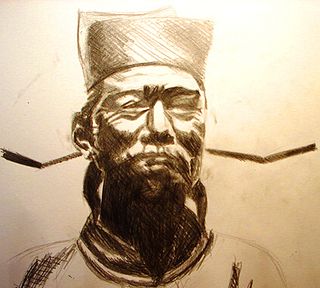The 1000s was a decade of the Julian Calendar which began on January 1, 1000, and ended on December 31, 1009.

Year 1135 (MCXXXV) was a common year starting on Tuesday of the Julian calendar.

1066 (MLXVI) was a common year starting on Sunday of the Julian calendar, the 1066th year of the Common Era (CE) and Anno Domini (AD) designations, the 66th year of the 2nd millennium, the 66th year of the 11th century, and the 7th year of the 1060s decade.
The 1070s was a decade of the Julian Calendar which began on January 1, 1070, and ended on December 31, 1079.
The 960s decade ran from January 1, 960, to December 31, 969.
The 980s decade ran from January 1, 980, to December 31, 989.
The 1010s was a decade of the Julian Calendar which began on January 1, 1010, and ended on December 31, 1019.
The 1030s was a decade of the Julian Calendar which began on January 1, 1030, and ended on December 31, 1039.

Year 1029 (MXXIX) was a common year starting on Wednesday of the Julian calendar, the 1029th year of the Common Era (CE) and Anno Domini (AD) designations, the 29th year of the 2nd millennium, the 29th year of the 11th century, and the 10th and last year of the 1020s decade.

Year 1165 (MCLXV) was a common year starting on Friday of the Julian calendar.

Year 1035 (MXXXV) was a common year starting on Wednesday of the Julian calendar, the 1035th year of the Common Era (CE) and Anno Domini (AD) designations, the 35th year of the 2nd millennium, the 35th year of the 11th century, and the 6th year of the 1030s decade.

Year 1074 (MLXXIV) was a common year starting on Wednesday of the Julian calendar, the 1074th year of the Common Era (CE) and Anno Domini (AD) designations, the 74th year of the 2nd millennium, the 74th year of the 11th century, and the 5th year of the 1070s decade.

Year 1075 (MLXXV) was a common year starting on Thursday of the Julian calendar.

Guaimar IV was Prince of Salerno (1027–1052), Duke of Amalfi (1039–1052), Duke of Gaeta (1040–1041), and Prince of Capua (1038–1047) in Southern Italy over the period from 1027 to 1052. He was an important figure in the final phase of Byzantine authority in the Mezzogiorno and the commencement of Norman power. He was, according to Amatus of Montecassino, "more courageous than his father, more generous and more courteous; indeed he possessed all the qualities a layman should have—except that he took an excessive delight in women."
John II was the duke of Amalfi from 1029 to 1069 with multiple interruptions. He was the son of Sergius II and Maria, sister of Pandulf IV of Capua. He was the last significant duke of Amalfi before the Norman conquest of 1073.
Manso II the Blind was the duke of Amalfi on three separate occasions: from 1028 to 1029, from 1034 to 1038, and from 1043 to 1052. He was the second son of Sergius II and Maria, sister of Pandulf IV of Capua. His whole ducal career consisted of wars with his brother, John II, over the throne. The Chronicon Amalfitanum is an important source for his reign.

The Lombard Principality of Salerno was a medieval Southern Italian state, formed in 851 out of the Principality of Benevento after a decade-long civil war. It was centred on the port city of Salerno. Although it owed allegiance at its foundation to the Carolingian emperor, it was de facto independent throughout its history and alternated its allegiance between the Carolingians and their successors in the West and the Byzantine emperors in the east.
The 1020s was a decade of the Julian Calendar which began on January 1, 1020, and ended on December 31, 1029.









